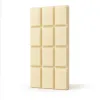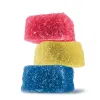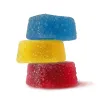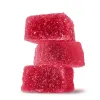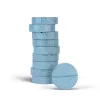With the cannabinoid landscape changing seemingly every day, more and more compounds are coming into the light that were previously undiscovered or ignored. Among those discovered long ago but neglected for decades is CBDV. While it was originally found in the 1970s, cannabidivarin is just recently rising in the ranks of popularity among cannabis users.
But what exactly is this compound? What are CBDV’s effects and potential benefits, and how does it compare to other, more popular cannabinoids like delta 8, delta 9, delta 10, and CBD?
What Is CBDV?
Cannabidivarin, or CBDV, is a chemical in the cannabis plant. So far, research has demonstrated that CBDV is mainly found in cannabis indica landrace strains native to Asia, Africa and South America, as well as other strains naturally lower in THC. As a rule of thumb, strains with higher CBD contents also tend to be higher in CBDV. Although CBDV was actually discovered over 50 years ago, researchers are just now giving it the attention it deserves—and for good reason!
Much like CBD, CBDV is non-psychoactive, meaning it does not make users high. Some early research on the compound suggests that CBDV might make certain nerve cells less active. These specific nerve cells are involved in inflammation, seizures, pain, and other conditions. Thus, CBDV’s inhibiting effects may improve conditions related to these bodily functions.
There is some interest in the medical community in using cannabidivarin for nausea, long-term inflammation in the digestive tract, epilepsy, and other conditions, but there currently exists no sound scientific evidence to support these claims. Here’s the evidence we do have, however:
- Much of the interest surrounding CBDV has been centered around its effect on seizures. As a matter of fact, GW Pharmaceuticals, the company that developed the first FDA-approved CBD-based drug Epidiolex, is currently developing a CBDV-based drug known as GPW42006 with the purpose of reducing or preventing epileptic and other forms of seizures. The company’s research has shown that CBDV affects neurochemical pathways involved in the onset and progression of several types of epilepsy.
- According to a 2018 rodent study, CBDV has proven promising in helping neurobehavioral issues associated with Rett syndrome, which is caused by an X chromosome mutation that affects girls with seizures, speech issues, and muscle spasticity. Researchers found CBDV to help with genetically determined and chemically-induced forms of this and other similar diseases.
- Another animal study published in the British Journal of Pharmacology in 2019 found that CBDV was potentially beneficial for patients with Duchenne muscular dystrophy (DMD), a disease characterized by chronic inflammation and irreversible damage and degeneration to skeletal muscles. CBDV may reduce inflammation, as well as potentially restore and even enhance muscle function. Additionally, it was found to improve locomotion.
- CBDV is currently being studied for its potential to treat some significant autism spectrum disorder (ASD) issues, including repetitive behavioral problems, cognitive challenges, and communication and social functioning issues.
- Initial studies on rodents have also shown that CBDV is potentially anti-nausea. It acts as an agonist to CB1 receptors, thereby blocking nausea responses in the body.
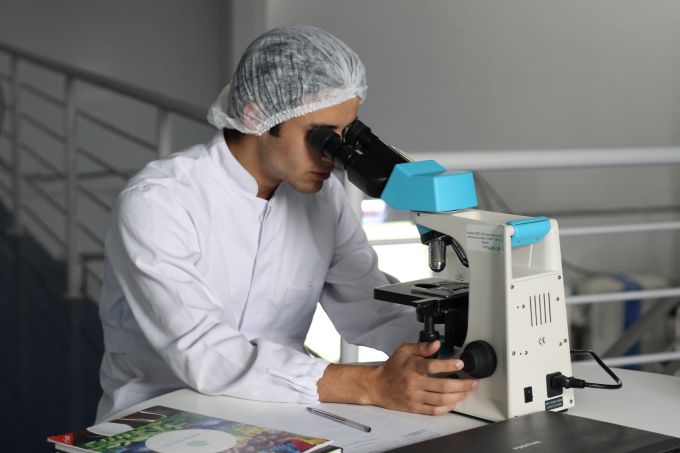
Does CBDV Show Up on A Drug Test?
CBDV is non-psychoactive and acts a lot like CBD in the body, which on its own does not show up on drug tests. That said, we cannot make any guarantees that CBDV will not make you fail a drug test. Research on the compound remains in its infancy, so its drug test status is not set in stone.
Additionally, it also depends on what other compounds are in your CBDV products, as it is often paired with other cannabinoids in blended items. Because hemp-derived cannabinoids are legally allowed to contain up to 0.3% THC, even these minute amounts could potentially trigger a drug test. If you’re worried about drug test status, it’s a good idea to look into CBD isolate products, which contain pure CBD and no traces of any other cannabinoids or compounds found in hemp.
How Long Does CBDV Stay in Your System?
Because research on CBDV is still being developed and was just recently started, there is not enough information on the compound to accurately determine how long it stays in your system.
How is CBDV Made?
CBDV isn't found in all cannabis plants like other cannabinoids such as THC and CBD. It is mainly derived from landrace indica strains containing higher levels of CBD than THC. The term “landrace” means that that specific cannabis strain was developed in its natural habitat without being crossbred with other plants of the same species.
Because landrace strains are isolated from other plants to avoid any cross interactions, they’re rare to come by. CBDV is most commonly extracted from marijuana plants, but it is federally illegal to do so in the United States and is only considered legal in states with medical or recreational cannabis programs. It can also be derived from hemp, but it’s difficult to find a reliable retailer able to produce the compound.
At Diamond CBD, we use a process known as “cellular agriculture” to increase the CBDV yields in our hemp plants. Because CBDV is only found in trace amounts in select strains, scientists must put in some extra work in the lab to ensure a larger yield. This process isn't only used in cannabis—it’s actually extremely popular in the food production industry!
Is CBDV Safe?
CBDV is considered safe to take in doses up to 1600mg daily for up to two months. There isn't enough reliable research to know if the compound is safe when taken in larger doses for more than eight weeks. Even in the short term, it might cause side effects including diarrhea, dizziness, headaches, sleepiness, and nausea.
When obtained from a trustworthy, transparent, and reliable source, CBDV is safe. Because the FDA does not closely monitor the production and distribution of hemp-derived cannabinoids, many manufacturers and retailers don’t take the necessary safety precautions to ensure a pure, contaminant-free product that is safe to consume.
When using CBDV— or any other hemp-derived cannabinoid, for that matter—your most important safety concern should always be their source. When choosing your cannabinoid retailer, be sure to do some research on their production processes. At Diamond, we extract our compounds from organic, non-GMO, all-American hemp grown with no herbicides or pesticides. Additionally, all of our products are third-party lab tested, and you can find these tests on our website as well as a transparent and detailed ingredient list on each product.
Is CBDV Legal?
CBDV’s legality depends on where it comes from. At the federal level, CBDV derived from marijuana is illegal and considered a schedule 1 controlled substance. When derived from hemp, however, the compound is 100% federally legal.
This is all due to the Farm Bill of 2018. Also known as the Agriculture Improvement Act, the Farm Bill legalized hemp and hemp derivatives, but kept marijuana illegal on the federal level. Marijuana is defined as cannabis plants containing more than 0.3% THC on a dry-weight basis, while hemp is defined as cannabis plants containing up to 0.3% THC.
Hemp production legalized in new Farm Bill
CBDV Compared to Different Popular Cannabinoids
CBDV was discovered over five decades ago, but it still isn't nearly as popular as cannabinoids like delta 8, delta 9, delta 10, and even CBD. We know research on the compound remains in its infancy, but from what we know, how does it compare to its more popular counterparts?
CBDV vs. Delta 8
Like with the other “deltas” on this list, the main difference between delta 8 and CBDV is that delta 8 is psychoactive, while CBDV is not. That said, delta 8 isn’t as psychoactive as delta 9, also known as THC. In fact, delta 8 is thought to be around half as strong as delta 9 and its side effects are also thought to be milder, which is why the compound has gained the nickname “delta 9’s nicer younger sibling.”
Some of delta 8’s effects and benefits include:
- Relaxation
- Pain relief
- Appetite stimulation
- Better sleep
- Anxiety relief
- Digestive support
CBDV vs. Delta 9
Delta 9, or THC, is the main psychoactive compound in hemp, meaning that the main and most notable difference between the two cannabinoids is that delta 9 gets you high while CBDV does not. Even with delta 9’s relatively strong psychoactive potency, the compound still has many benefits, including:
- Insomnia relief
- Appetite stimulation
- Anxiety management
- Anti-inflammatory properties
- Analgesic properties
- Relaxation
- Euphoria
CBDV vs. Delta 10
Delta 10 is the mildest psychoactive cannabinoid on this list. Contrary to popular belief, the number in its name being higher than delta 9’s does not make it more psychoactively potent. As a matter of fact, delta 10 is weaker than both, delta 8 and delta 9. So, even though it is psychoactive, it will not get you as high as other tetrahydrocannabinols.
Its main effects include:
- Stress relief
- Relaxation
- Uplifting properties
- Euphoria
- Increased focus and creativity
- Energy boosts
CBDV vs. CBD
CBDV and CBD, as their names suggest, are very similar in effects and benefits. While CBD has already been approved for medicinal uses to reduce seizures related to rare and aggressive forms of epilepsy that don’t respond to traditional medication like Lennox-Gastaut or Dravet syndrome, CBDV has proven effective in reducing seizures caused by Rett syndrome.
Additionally, CBD is already approved by the FDA, but CBDV is still in its clinical trial period and is yet to be approved.
Some other effects of CBD include:
- Anti-stress
- Muscle relaxant
- Anti-nausea
- Sleep regulation
- Analgesic
- Inflammation relief
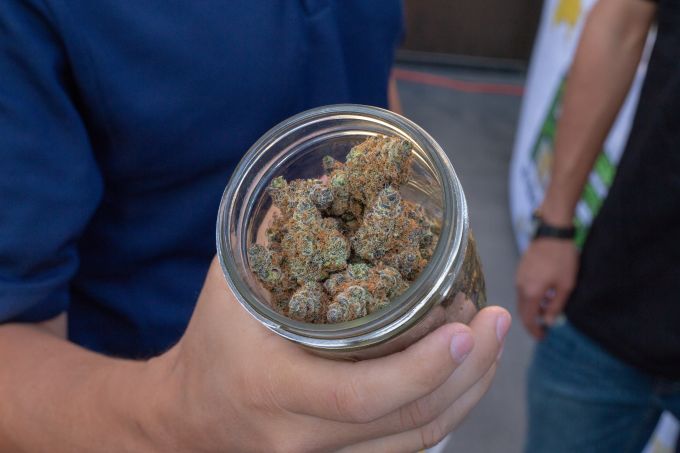
Final Thoughts
Cannabidivarin was found in cannabis more than 50 years ago, but it’s just now getting the recognition it deserves. Non-psychoactive and similar in effects to CBD, CBDV has a plethora of effects and potential benefits to offer its users. From reducing nausea and easing inflammation to its potential to treat some types of epileptic and non-epileptic seizures, the compound has recently caught the attention of the medical community.
Because research on the compound remains in its infancy, we don’t yet know many things about it, such as whether it can trigger a positive drug test or how long it stays in the system. Even so, it compares favorably to other, more popular cannabinoids, especially CBD—it is thought to be effective at reducing types of seizures CBD is not effective at. While our products are not meant to be consumed as health supplements or for medicinal purposes, CBDV is quickly proving to be indisputably indispensable to keep in the home.




